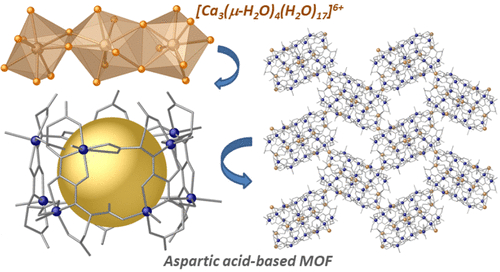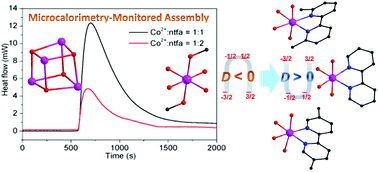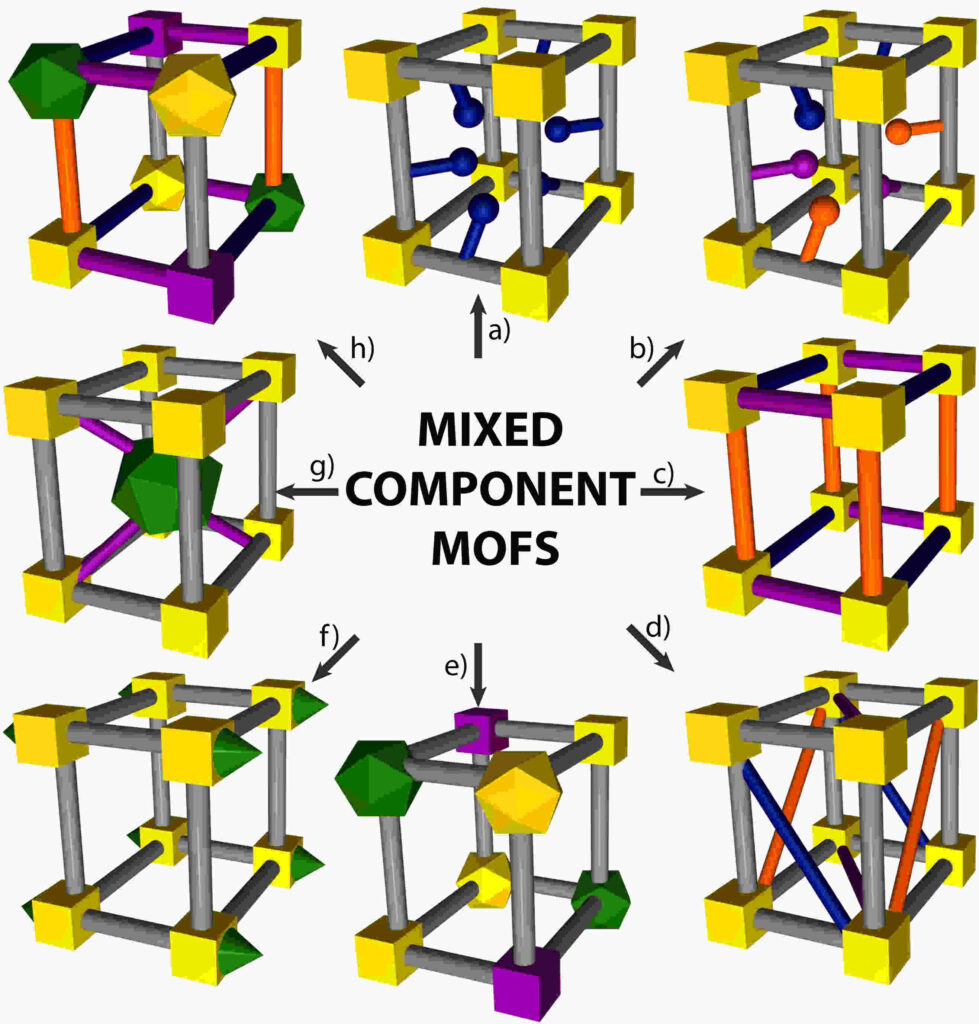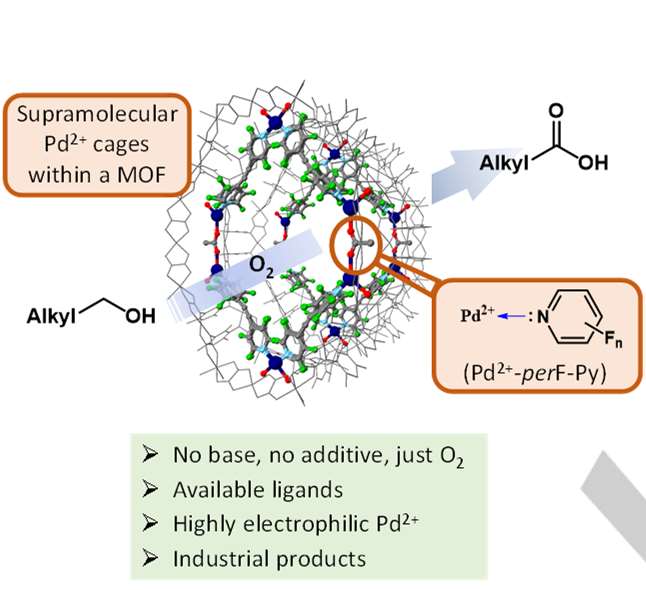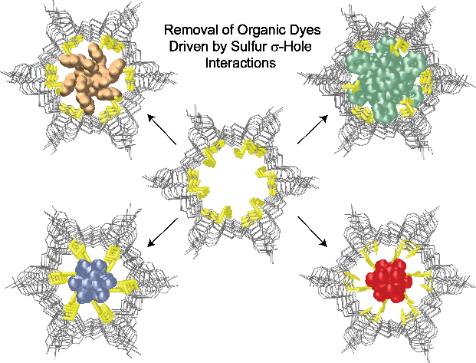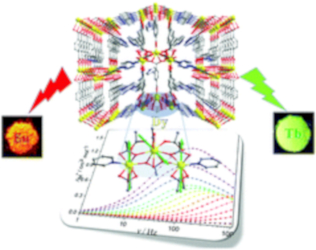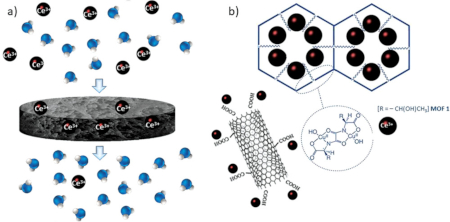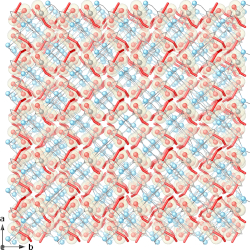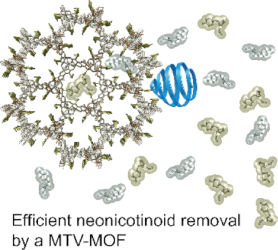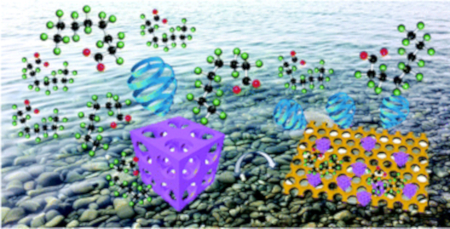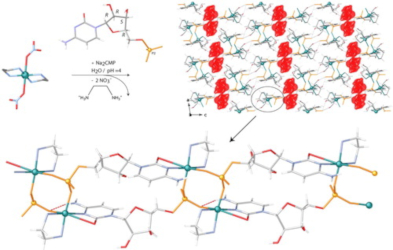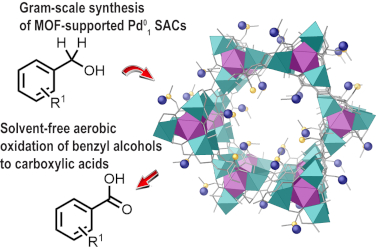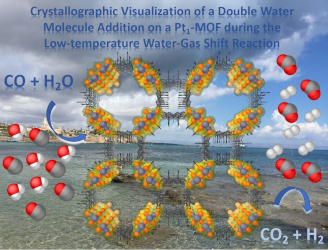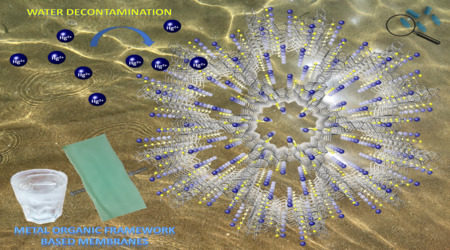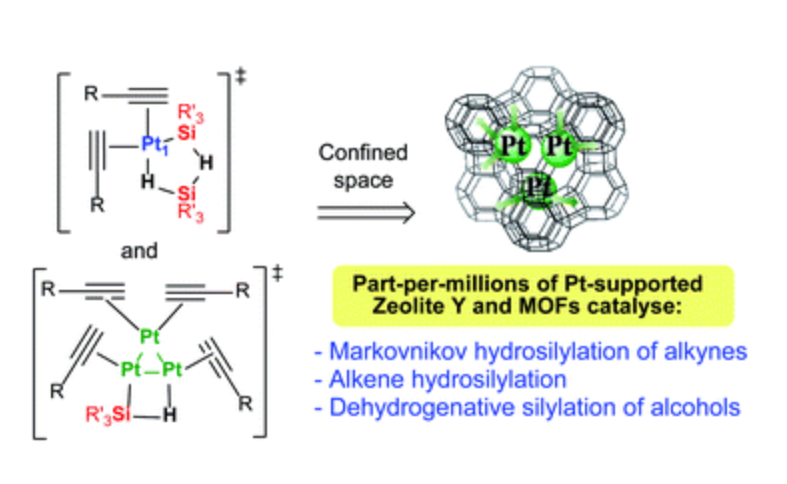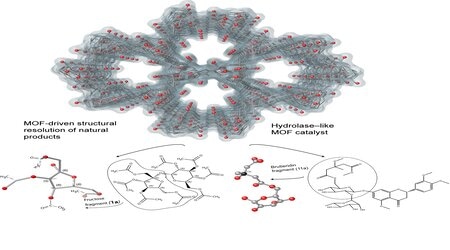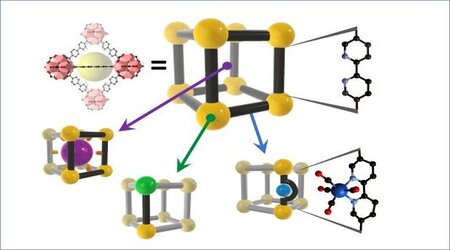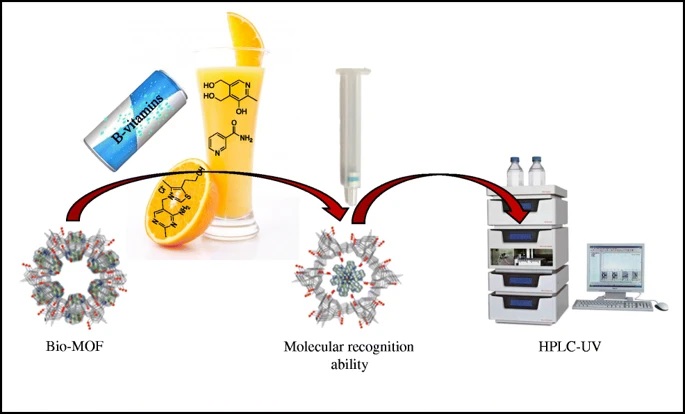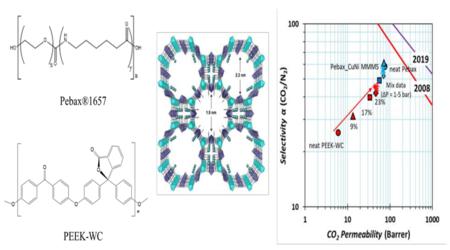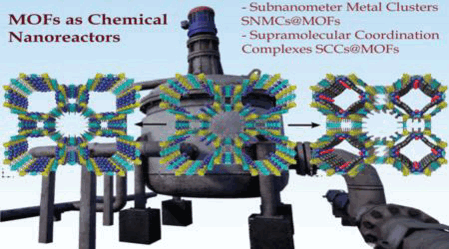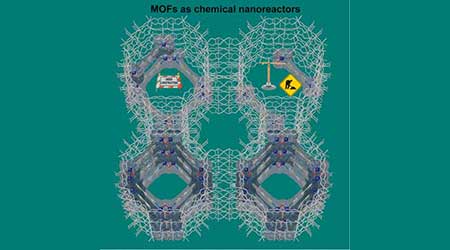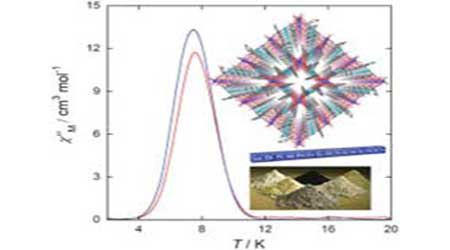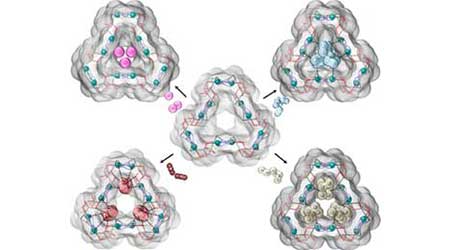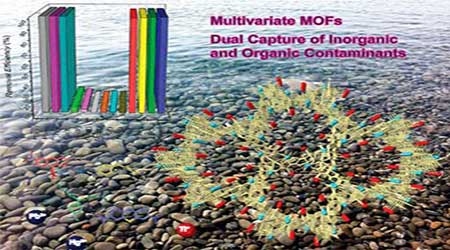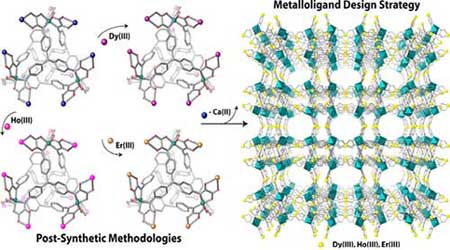Publications related to the ERC-2018-COG Grant (814804 — MOF-reactors)
A Biocompatible Aspartic-Decorated Metal−Organic Framework with Tubular Motif Degradable under Physiological Conditions (Inorg. Chem. 2021, 60, 18, 14221–14229)
Achieving a precise control of the final structure of metal−organic frameworks (MOFs) is necessary to obtain desired physical properties. Here, we describe how the use of a metalloligand design strategy and a judicious choice of ligands inspired from nature is a versatile approach to succeed in this challenging task. We report a new porous chiral [...]
Switching of easy-axis to easy-plane anisotropy in cobalt(II) complexes (Inorg. Chem. Front., 2021,8, 5158-5168)
A tetranuclear cubane-type complex [Co4(ntfa)4(CH3O)4(CH3OH)4] (1) with a {Co4O4} core, and a mononuclear complex [Co(ntfa)2(CH3OH)2] (2) have been rationally obtained by adjusting the ratio of the β-diketonate and Co(II) ions, with the synthetic processes being monitored by in situ microcalorimetry. Then, following synthetic conditions to obtain 2, but using three distinct N-donor coligands – 2,2’-bipyridyl [...]
Mixed component metal-organic frameworks: Heterogeneity and complexity at the service of application performances (Coordination Chemistry Reviews 451 (2022) 214273)
The synthesis of mixed-component metal-organic frameworks (MOFs) –including multivariate MOFs (MTVMOFs), multicomponent MOFs, mixed-metals MOFs and mixed-ligands and metals MOFs– is becoming a very active research field. This is mainly based on the unique possibilities these materials offer to incorporate multiple functionalities and in how this heterogenity and complexity is translated in unexpected properties, which [...]
MOF–stabilized perfluorinated palladium cages catalyze the additive–free aerobic oxidation of aliphatic alcohols to acids (Chem. Eur. J. 2021, e202103781)
Extremely high electrophilic metal complexes, composed by a metal cation and very electron poor –donor ancillary ligands, are expected to be privileged catalysts for oxidation reactions in organic chemistry. However, their low lifetime prevents any use in catalysis. Here we show the synthesis of fluorinated pyridine–Pd2+ coordinate cages within the channels of an anionic tridimensional [...]
Metal-Organic Frameworks as Unique Platforms to Gain Insight of σ-Hole Interactions for the Removal of Organic Dyes from Aquatic Ecosystems (Chem. Eur. J. 2022, e202200034)
The combination of high crystallinity and rich host-guest chemistry in metal-organic frameworks (MOFs), have situated them in an advantageous position, with respect to traditional porous materials, to gain insight on specific weak noncovalent supramolecular interactions. In particular, sulfur σ-hole interactions are known to play a key role in the biological activity of living beings as [...]
A series of lanthanide(III) metal–organic frameworks derived from a pyridyl-dicarboxylate ligand: single-molecule magnet behaviour and luminescence properties (Dalton Trans., 2020, 49, 14123)
Journal: Dalton Trans., 2020, 49, 14123 Abstract: The reactions of LnIII ions with a versatile pyridyl-decorated dicarboxylic acid ligand lead to the formation of a series of novel three-dimensional (3D) Ln-MOFs, [Ln3( pta)4(Hpta)(H2O)]·xH2O (Ln = Dy (1), Eu (2), Gd (3), Tb (4), H2pta = 2-(4-pyridyl)-terephthalic acid, x = 6 for 1, 2.5 for 2, [...]
Synthesis and Enhanced Capture Properties of a New BioMOF@SWCNT-BP: Recovery of the Endangered Rare-Earth Elements from Aqueous Systems (Adv. Mater. Interfaces 2021, 8 2100730)
Journal: Adv. Mater. Interfaces 2021, 8 2100730 Abstract: Human society is facing—among other environmental threats—an enormous challenge due to human activities. The extensive use of high-tech devices and electronics equipment in the daily life makes, among others, rare-earth elements (REEs) recovery from secondary sources highly required. Here, a novel bioMOF-based single-walled carbon nanotube buckypaper [...]
Photodegradation of Brilliant Green Dye by a Zinc bioMOF and Crystallographic Visualization of Resulting CO2 (Molecules 2021, 26, 4098)
Journal: Molecules 2021, 26, 4098 Abstract: We present a novel bio-friendly water-stable Zn-based MOF (1), derived from the natural amino acid L-serine, which was able to efficiently photodegrade water solutions of brilliant green dye in only 120 min. The total degradation was followed by UV-Vis spectroscopy and further confirmed by single-crystal X-ray crystallography, revealing the [...]
Highly Efficient Removal of Neonicotinoid Insecticides by ThioetherBased (Multivariate) Metal−Organic Frameworks (ACS Appl. Mater. Interfaces 2021, 13, 24, 28424–28432)
Journal: ACS Appl. Mater. Interfaces 2021, 13, 24, 28424–28432 Abstract: Circumventing the impact of agrochemicals on aquatic environments has become a necessity for health and ecological reasons. Herein, we report the use of a family of five eco-friendly water-stable isoreticular metal–organic frameworks (MOFs), prepared from amino acids, as adsorbents for the removal of neonicotinoid insecticides (thiamethoxam, [...]
Reverse osmosis and nanofiltration membranes for highly efficient PFASs removal: overview, challenges and future perspectives (Dalton Trans., 2021, 50, 5398)
Journal: Dalton Trans., 2021, 50, 5398 Abstract: Today, it is extremely urgent to face the increasing shortage of clean and safe water resources, determined by the exponential growth of both world population and its consumerism, climate change and pollution. Water remediation from traditional chemicals and contaminants of emerging concerns (CECs) is supposed to be among [...]
Synthesis of a rod-based porous coordination polymer from a nucleotide as a sequential chiral inductor (Journal of Coordination Chemistry, 2021, 74, 200)
Journal: Journal of Coordination Chemistry, 2021, 74, 200 Abstract: We report the two-step synthesis of a novel chiral rod-based porous coordination polymer (PCP). The chemical approach consists of the use of a previously prepared bis(ethylenediamine) copper monomer [Cu(en)]2(NO3)2 [where en¼ethylenediamine] reacting with the cytidine 50-monophosphate (CMP) nucleotide. The bis(ethylenediamine) copper compound—stabilized by axial coordination of [...]
Soluble/MOF-Supported Palladium Single Atoms Catalyze the Ligand‑, Additive‑, and Solvent-Free Aerobic Oxidation of Benzyl Alcohols to Benzoic Acids (Journal of the American Chemical Society 2021 143 (6), 2581-2592)
Journal: Journal of the American Chemical Society 2021 143 (6), 2581-2592 Abstract: Metal single-atom catalysts (SACs) promise great rewards in terms of metal atom efficiency. However, the requirement of particular conditions and supports for their synthesis, together with the need of solvents and additives for catalytic implementation, often precludes their use under industrially viable conditions. [...]
Crystallographic Visualization of a Double Water Molecule Addition on a Pt1-MOF during the Low-temperature Water- Gas Shift Reaction (ChemCatChem 2021, 13, 1195–1200)
Journal: ChemCatChem 2021, 13, 1195–1200 Abstract: The low-temperature water-gas shift reaction (WGSR, CO+H2O ⇔ H2+CO2) is considered a very promising reaction -candidate for fuel cells- despite an efficient and robust catalyst is still desirable. One of the more prominent catalysts for this reaction is based on single Pt atoms (Pt1) on different supports, which are [...]
Bioinspired Metal‐Organic Frameworks in Mixed Matrix Membranes for Efficient Static/Dynamic Removal of Mercury from Water (Adv. Funct. Mater. 2021, 31, 2008499)
The mercury removal efficiency of a novel metal‐organic framework (MOF) derived from the amino acid S‐methyl‐L‐cysteine is presented and the process is characterized by single‐crystal X‐ray crystallography. A feasibility study is further presented on the performance of this MOF—and also that of another MOF derived from the amino acid L‐methionine—when used as the sorbent in mixed matrix [...]
Cyclic metal(oid) clusters control platinum-catalysed hydrosilylation reactions: from soluble to zeolite and MOF catalysts (Chem. Sci., 2020, 11, 8113)
Chem. Sci., 2020, 11, 8113-8124 Abstract: The Pt-catalysed addition of silanes to functional groups such as alkenes, alkynes, carbonyls and alcohols, i.e. the hydrosilylation reaction, is a fundamental transformation in industrial and academic chemistry, often claimed as the most important application of Pt catalysts in solution. However, the exact nature of the Pt active species and its […]
Hydrolase–like catalysis and structural resolution of natural products by a metal–organic framework (Nature Communications, Article number: 3080 (2020)).)
Nature Communications, Article number: 3080 (2020) Abstract: The exact chemical structure of non–crystallising natural products is still one of the main challenges in Natural Sciences. Despite tremendous advances in total synthesis, the absolute structural determination of a myriad of natural products with very sensitive chemical functionalities remains undone. Here, we show that a metal–organic framework [...]
Isolating Reactive Metal-based Species in Metal-organic Frameworks – Viable Strategies and Opportunities (Chem. Sci., 2020, 11, 4031-4050)
Chem. Sci., 2020, 11, 4031-4050 Abstract: Structural insight into reactive species can be achieved via strategies such as matrix isolation in frozen glasses, whereby species are kinetically trapped, or by confinement within the cavities of host molecules. More recently, Metal-organic Frameworks (MOFs) have been used as molecular scaffolds to isolate reactive metal-based species within their [...]
Bio-metal-organic frameworks for molecular recognition and sorbent extraction of hydrophilic vitamins followed by their determination using HPLC-UV (Microchimica Acta volume 187, Article number: 201 (2020))
A bio-metal-organic framework (bio-MOF) derived from the amino acid L-serine has been prepared in bulk form and evaluated as sorbent for the molecular recognition and extraction of B-vitamins. The functional pores of bio-MOF exhibit high amounts of hydroxyl groups jointly directing other supramolecular host-guest interactions thus providing the recognition of B-vitamins in fruit juices and energy [...]
Glassy PEEK-WC vs rubbery Pebax®1657 polymers: effect on the gas transport in CuNi-MOF based mixed matrix membranes (Appl. Sci. 2020, 10(4), 1310)
Mixed matrix membranes (MMMs) are seen as promising candidates to overcome the fundamental limit of polymeric membranes, known as the so-called Robeson upper bound, which defines the best compromise between permeability and selectivity of neat polymeric membranes. To overcome this limit, the permeability of the filler particles in the MMM must be carefully matched with [...]
MOFs as chemical nano-reactors: synthesis and stabilization of catalytically active metal species in confined spaces (Acc. Chem. Res. 2020, 53, 2, 520-531)
Acc. Chem. Res. 2020, 53, 2, 520-531 Since the advent of the first metal-organic frameworks (MOFs), we have witnessed an explosion of captivating architectures with exciting physicochemical properties and applications in a wide range of fields. This, in part, can be understood under the light of their rich host-guest chemistry and the possibility to use [...]
Self-assembly of catalytically-active supramolecular coordination compounds within metal-organic frameworks (J. Am. Chem. Soc. 2019, 141, 26, 10350-10360)
Supramolecular Coordination Compounds (SCCs) represent the power of Coordination Chemistry methodologies to self-assemble discrete architectures with targeted properties. SCCs are generally synthesised in solution, with isolated fully-coordinated metal atoms as structural nodes, thus severely limited as metal-based catalysts. Metal-Organic Frameworks (MOFs) show unique features to act as chemical nanoreactors for the in-situ synthesis and stabilization [...]
Magnetic order in a CuII-DyIII oxamato-based two-dimensional coordination polymer (C. R. Chimie 22 (2019) 466-475)
We report the synthesis, crystal structure and magnetic characterization of a novel two-dimensional copper(II)-dysprosium(III) coordination polymer of formula [LiI(OH2)4]2[DyIIICuII2(Me2pma)4Cl(H2O)] . 4H2O (1) [Me2pma = N-2,6-dimethylphenyloxamate]. Compound 1 was obtained by using the mononuclear anionic complex, [CuII(Me2pma)2]2-, as a bis(bidentate) metalloligand toward solvated dysprosium(III) cations and shows a square [DyIIICuII2] layered structure of (44.62) net topology. [...]
Efficient Gas Separation and Transport Mechanism in Rare Hemilabile Metal-Organic Framework (Chem. Mater. 2019, 31, 15, 5856-5866)
Understanding/visualizing the established interactions between gases and adsorbents is mandatory to implement better performance materials in adsorption/separation processes. Here we report the unique behavior of a rare example of a hemilabile chiral three-dimensional metal-organic framework (MOF) with an unprecedented qtz-e-type topology, with formula CuII2(S,S)-hismox·5H2O (1) (hismox = bis[(S)-histidine]oxalyl diamide). 1 exhibits a continuous and reversible [...]
Multivariate Metal-Organic Frameworks for the Simultaneous Capture of Organic and Inorganic Contaminants from Water (J. Am. Chem. Soc. 2019, 141, 34, 13601-13609)
We report a new water-stable multivariate (MTV) Metal-Organic Framework (MOF) prepared by combining two different oxamide-based metalloligands derived from the natural amino acids L-serine and L-methionine. This unique material features hexagonal channels decorated with two types of flexible and functional 'arms' (-CH2OH and -CH2CH2SCH3) capable to act, synergistically, for the simultaneous and efficient removal of [...]
Metal−Organic Frameworks as Playgrounds for Reticulate Single-Molecule Magnets (Inorg. Chem. 2019, 58, 21, 14498-14506)
Achieving an accurate control on the final structure of Metal-Organic Frameworks (MOFs) is mandatory to obtain target physical properties. Here we describe how the combination of a metalloligand design strategy and a post-synthetic method is a versatile and powerful approach to success on this extremely difficult task. In a first stage, a novel oxamato-based tetranuclear [...]

